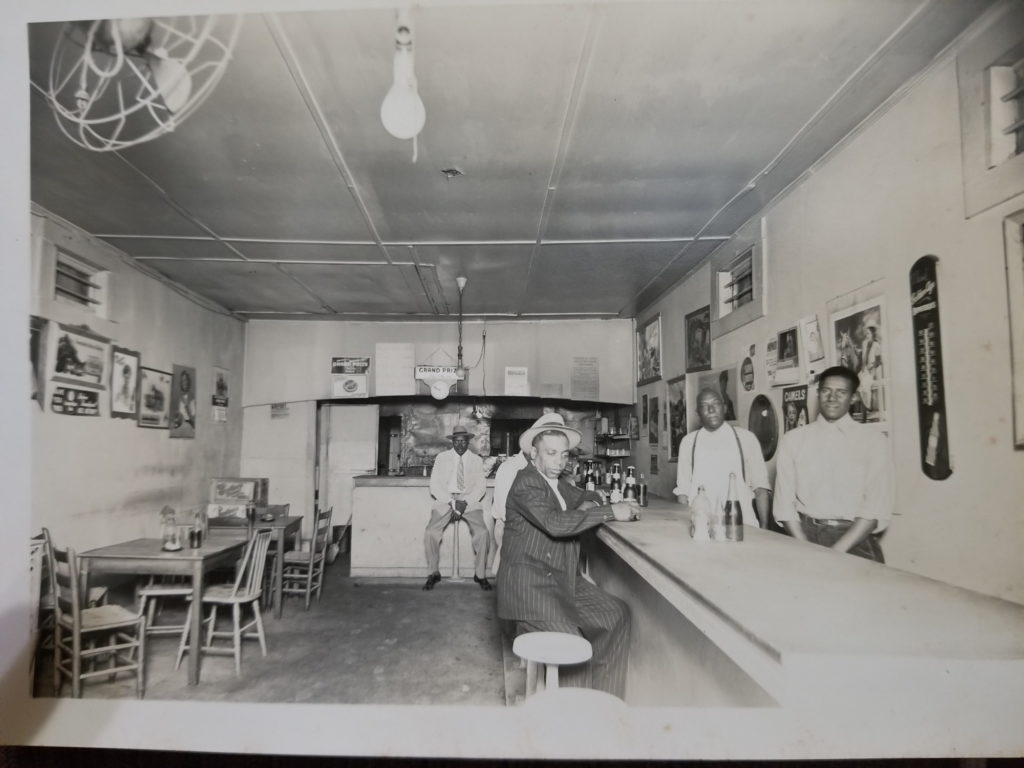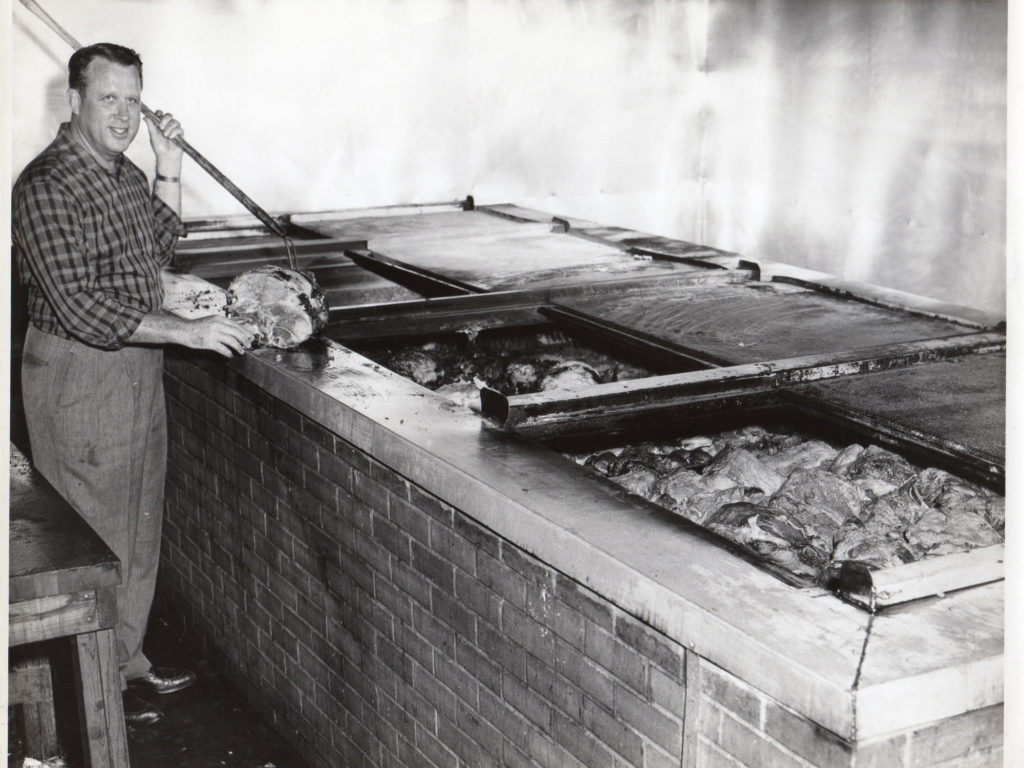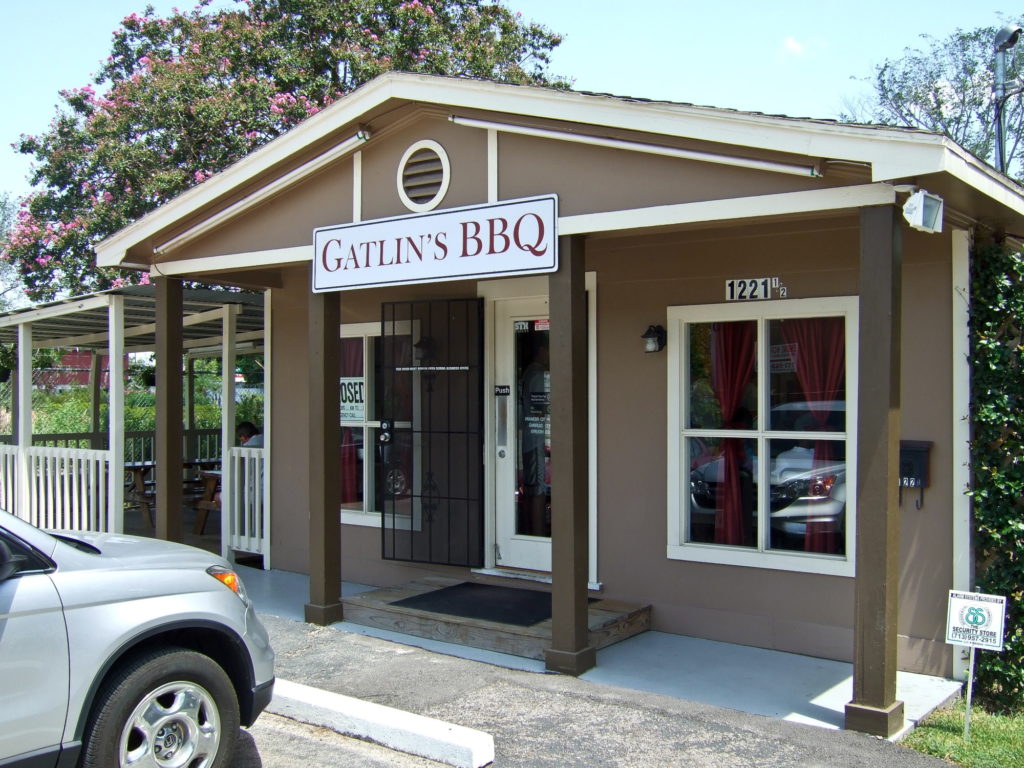A Brief History of Houston Barbecue
The history of barbecue in Houston, like the history of the city itself, is characterized by a diversity of traditions and influences. Political, ethnic, religious, geographic and economic influences have all combined to make Houston one of the most prosperous and unique cities in the world. Houston’s barbecue, like its culture, is just as complex and interesting.
 Avalon BBQ in Third Ward ca. 1940s.
Avalon BBQ in Third Ward ca. 1940s.
There is no definitive history of Houston barbecue, mainly because there is little documentation. There are in fact just a few substantial reports of Houston barbecue before the 1960s, when food writing became a staple of the newspapers-of-record.
So like the wildcatter of the past who drilled for oil using no more than instinct and an interview with an old local who knew the landscape, prospecting for barbecue history is a process of extracting bits of information from old maps, city directories and interviews with retired pitmasters.
The first clue to the origins of Houston barbecue begin in the city directories of the 1920s. These show barbecue restaurants scattered throughout the city, though with a concentration of barbecue joints along West Dallas and West Gray streets in and near Freedmen’s Town, the historic area where freed slaves settled after the Civil War.
In fact, census records show many of the owners of these barbecue joints to be Black.
The influence of Southern U.S. cooking traditions brought to Texas by freed slaves is well-documented. Even in Central Texas, where German, Czech, and Polish immigrants have traditionally been credited with “inventing” Texas barbecue, freed slaves were often the ones actually cooking the meat and tending the pits at the large community barbecues that were frequent during the earliest days of statehood.
By the 1920s the concentration of barbecue joints in the Freedmen’s Town area of Houston suggests this is where commercial barbecue first took hold in the city.
The most famous barbecue joint of that time was Matt Garner’s Barbecue Stand on West Dallas. Garner moved from his hometown of Opelousas, La., to Beaumont, and then on to Houston. Garner is credited with bringing two traditions of Beaumont-style barbecue to Houston – the all-beef “juicy links,” a type of sausage popularized in Beaumont that probably originated in Louisiana, and a style of brick or cinder block barbecue pit still used at a few places in Houston.
Much of Southeast Texas’ barbecue culture can be traced to the 1920s-era migrations of workers from south-central Louisiana to Beaumont, where they could find job opportunities in the booming petroleum industry.
Houston’s senior pitmasters Felix Powell (RIP) of Powell’s Bar-B-Q and Byron Johnson (retired) of Byron’s Gourmet Bar-B-Que both grew up in Beaumont, and their families hailed from the Cajun country around Opelousas and Lafayette.
By the mid-1930s, John and Lela Davis opened Shepherd Drive Barbecue Stand near the intersection of Shepherd Drive and I-10 today. The site is now home to Pizzitola’s Bar-B-Cue, and a photo of Linwood Davis, son of the original owners, still hangs on the wall.
In the Davis’ day, the neighborhood was known as “West End” and was considered “mixed,” that is, Black and White businesses and residences existed side-by-side. This was the era of Jim Crow laws when restaurants were obligated to separate the entrances and dining rooms for White and Black diners. But because the clientele and owners at Shepherd Drive Barbecue were Black, Jim Crow laws were reversed – White patrons placed orders from a window in the rear of the restaurant.
Indeed, barbecue was one of the few traditions that encouraged desegregation in the city. Throughout the 1930s, ’40s and ’50s, White patrons made the trip to Houston’s “barbecue wards” – the traditionally Black Third and Fifth Wards – to get the city’s best barbecue (they still had to order in the back).
 Deluxe Bar-B-Q Shop ca. 1950s on W. Dallas St.
Deluxe Bar-B-Q Shop ca. 1950s on W. Dallas St.
Houston Metropolitan Research Center
In the late 1940s, a machinist named Leonard McNeill won a small restaurant called Lenox Café in a craps game at a speakeasy he frequented on Harrisburg Blvd. By the mid-1950s he had changed the name to Lenox Bar-B-Q and had become one of Houston’s most famous barbecue impresarios. Lenox Bar-B-Q still exists today.
 Leonard McNeill of Lenox Bar-B-Q ca. 1950s
Leonard McNeill of Lenox Bar-B-Q ca. 1950s
At around same time, Avalon BBQ located in Third Ward became one of the most prominent barbecue joints in Houston, owned by three legendary African-American pitmasters: Joe Burney, Oscar “Unkie” Lott, and Bill Williams. Burney would go on to open Burney’s BBQ, and Lott would open Lott’s Barbecue, both on nearby Holman. Williams would open Bill William’s Bar-B-Q nearby.
By the 1960s and ’70s, Third and Fifth Wards cemented their reputations as the go-to neighborhoods for Houston barbecue. On Scott Street in the Third Ward, Murphy’s BBQ and Lott’s BBQ were well known, along with nearby Green’s BBQ and Drexler’s BBQ. In the Fifth Ward along Lockwood Drive were Kozy Kitchen and Lockwood Inn.
Also around this time, the brisket-centered traditions of Central Texas style barbecue were popularized at celebrated barbecue joints like Otto’s Barbecue and Goode Co. Barbeque.
In the 1980s, the Acres Homes neighborhood laid claim to two of Houston’s most popular barbecue joints, Burns BBQ and Williams Smokehouse, the latter closing in 2007 after a fire.
The 1990s were something of a lost decade for Houston barbecue. Automated barbecue pits made it easy for anyone to make cheap and fast barbecue of poor quality.
In the mid-2000s, the backlash against automated barbecue began. Clarence Pierson opened Pierson & Company Bar-B-Que in Oak Forest in 2007. He used an all-wood vertical steel smoker to produce a fusion of Houston barbecue traditions (boudin, pork ribs) with Central Texas traditions (brisket). In a nod to Houston barbecue history, Pierson’s mentor, Joseph Bourda of Po-boy Joe’s BBQ, hailed from New Iberia, La.
Then, in 2010, Houston native and Rice University graduate Greg Gatlin opened Gatlin’s BBQ in a tiny take-out shack in the Heights. He, too, combined a Southeast Texas sensibility (dirty rice, pork ribs) with the brisket traditions of Central Texas, all cooked using traditional techniques. The Houston craft-barbecue renaissance was on.
 Original Gatlin’s BBQ location ca. 2010
Original Gatlin’s BBQ location ca. 2010
Today, Houston barbecue is as great and diverse as it has ever been. A new generation of pitmasters is incorporating traditional influences (Creole, Cajun, African-American) with Houston’s booming culinary diversity. Korean, Vietnamese, Chinese, Mexican, Tex-Mex and many other traditions now influence the flavor of Houston barbecue. It’s a natural evolution for a city built on a culture of hard work, innovation and diversity.

